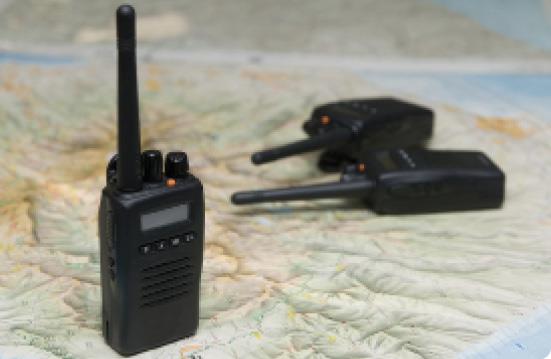06 April 2022

Ken Rehbehn, principal analyst at CritComm Insights,
contributing principal analyst for Omdia
Even as high-speed mobile cellular data services expand, the tremendous utility offered by simple push-to-talk voice communication is tough to beat. In the 2021 edition of Omdia’s Licensed Mobile Radio Report, the installed base of these handheld portable and vehicle-mounted radios continues to expand. The lurking question, however, is what changes are in store as push-to-talk over cellular gains traction in the years to come.
Land mobile radio spans a variety of radio technologies, ranging from simple analog systems to complex, computer-driven digital trunked networks. But at its core, the land mobile radio market is focused on a fundamental goal: simply and efficiently getting a voice transmission to a group of listeners. For the user, the key to simplicity is a single button that initiates the voice transmission.
Push-to-talk simplicity wins
The simplicity of push-to-talk means that a user does not have to unlock a screen, look up a number, or make multiple button taps when initiating a conversation. This feature makes push-to-talk the preferred voice communications tool for enterprise teams on construction sites, airfields, bus fleets, and other dispersed work activities. All users need to hear the same message, and push-to-talk makes this possible. Likewise, in public safety agencies, the simplicity of push-to-talk is an essential feature that aids police and fire operations.
Land mobile radio (LMR) systems deliver the push-to-talk capability with narrowband radio signals in the spectrum below 1 GHz. As a narrowband technology, data transmission capabilities are minimal. Digital LMR systems such as TETRA or DMR support data transmission, but only as short messages or packet data. Older analog LMR systems are voice only, with no data functionality. For heavy data sessions supporting graphics, cloud applications, or video, users must turn to LTE or 5G mobile broadband technologies.
Beyond south Asia, analog begins to fade
Omdia’s Licensed Mobile Radio Report tracks the market dynamics for push-to-talk radio communications. The 2021 edition concludes that the installed base of LMR users continues to grow, even as shipments slipped during the COVID era. Omdia found more than 53 million LMR active users at the end of 2020, an increase of 1.7% from the prior year.
Significantly, Omdia found 65.4% of the total 2020 installed base were digital subscribers. These users will continue to grow, increasing by 35.8% in 2025. The reason for the growth is the efficiency and expanded features enabled by digital land mobile radio systems.
Southern Asia presents a mix of technologies
As a large and diverse region, mobile radio technology adoption across South Asia varies significantly from country to country. Most nations across the region embrace high-end TETRA systems for sensitive communications facilities supporting the emergency services or rail systems. However, the trend is not universal as these digital systems tend to get deployed in major cities. Outside the cities, vast rural areas remain analog radio strongholds.
Pakistan and Bangladesh embraced different approaches towards LMR technology evolution. Early Huawei eLTE public safety deployments in Pakistan shifted notions about digitalization technology for large police forces. While almost 90% of Pakistan remains operating analog LMR systems, digital trunked systems such as TETRA remain limited. On the other hand, Bangladesh has embraced economic DMR Tier III digital trunked systems for some of the nation’s public safety communications requirements. Conventional DMR Tier II systems are now appearing in rural areas of the nation.
LTE and 5G disruption
Though land mobile radio systems have proven valuable tools for group coordination, the data limitations and high deployment costs are forcing enterprises and governments to shift from narrowband to broadband technologies. For enterprises, a variety of push-to-talk over cellular solutions are available that operate over mobile LTE networks. Government users are turning to a standardized mission-critical push-to-talk over cellular technology that incorporates quality of service, priority, and preemption.
Unfortunately, however, a shift to LTE presents a particular challenge to public safety operations. The ability for users to communicate with nearby users, even when the network is not reachable, is paramount but not available with today’s LTE devices.
Though the 3GPP standards effort that created mission-critical push-to-talk included the proximity services feature as a direct mode alternative, the capability has not entered the market. This gap means that the shift towards LTE and 5G depends upon hybrid push-to-talk devices that can handle LTE and a legacy LMR radio technology. Most major LMR device suppliers now provide hybrid options.
As the options for land mobile radio expand and users contemplate a future shift towards LTE and 5G communications, the fundamental need for simple group voice communications remains. For many years, and in many parts of the world, narrowband land mobile radio coverage will remain the foundation for enterprises and public safety.

Across South Asia, however, government regulators and policy-makers have not charted a course towards mobile broadband adoption. With no spectrum set aside or moves to engage national mobile network operators, speedy adoption of high-speed data services supporting the emergency services is unlikely.
CritComm Insights and Omdia are both members of TCCA www.tcca.info






